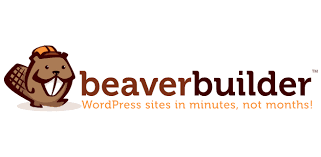In the digital age, your landing page is more than just a part of your website; it’s the frontline of your online presence, the make-or-break point where visitors decide to engage further with your brand or bounce away. With such high stakes, selecting the right tool to build your landing pages isn’t just important—it’s crucial to your online success. Today, we’re pitting two giants against each other: Unbounce, renowned for its conversion-centric approach, and Beaver Builder, a favorite for its WordPress integration and design flexibility. But which one will be the champion for your landing page needs? Let’s dive deep into their offerings to help you decide.
| Unbounce | Beaver Builder |
|---|---|
 |  |
| G2 Score – 4.4 out of 5 stars | G2 Score – 4.5 out of 5 stars |
| TrustRadius Score – 7.1/10 | TrustRadius Score – N/A |
Usability and Design Flexibility
The Cornerstones of Effective Landing Pages
The effectiveness of your landing page is directly influenced by two critical factors: usability and design flexibility. These aspects determine not just how easily you can bring your vision to life but also how well your landing pages can adapt to meet your audience’s expectations. Here’s how Unbounce and Beaver Builder measure up.
Unbounce: Streamlined Creation Meets Conversion Optimization
Unbounce is designed with a single goal in mind: to help you create landing pages that convert. Its platform offers a highly intuitive drag-and-drop editor, making it easy for marketers of all skill levels to design, customize, and publish landing pages without needing to dive into the code. This ease of use does not come at the expense of flexibility; Unbounce provides a wide range of customizable templates that serve as a starting point for your designs.
Beyond basic design capabilities, Unbounce shines in its optimization features. A/B testing is seamlessly integrated into the platform, allowing you to test different versions of your pages to see what works best. Additionally, dynamic text replacement ensures that your messaging can be personalized based on the visitors’ search terms, enhancing relevance and boosting conversion rates. This combination of usability and advanced optimization tools positions Unbounce as a powerful ally for marketers focused on achieving high conversion rates.
Beaver Builder: WordPress Integration with Extensive Customization
Beaver Builder, on the other hand, offers a different appeal, especially for users entrenched in the WordPress ecosystem. As a page builder plugin for WordPress, Beaver Builder emphasizes seamless integration with your existing website, allowing you to maintain design consistency and leverage the full power of WordPress. Its drag-and-drop interface is highly user-friendly, enabling you to build your landing pages within the comfort of the WordPress dashboard.
Design flexibility is where Beaver Builder truly excels. With its myriad of modules and row/column-based layout, the possibilities for customization are extensive. You can craft unique landing pages that perfectly match your brand’s aesthetics and user experience expectations. While Beaver Builder focuses more on the design aspect, it doesn’t leave conversion optimization behind. Through WordPress, users can integrate various plugins designed to enhance the conversion capabilities of their landing pages, from lead capture forms to analytics and A/B testing tools.
Conversion Optimization Features
Enhancing Page Performance
The true measure of a landing page’s success lies in its ability to convert visitors into leads or customers. Both Unbounce and Beaver Builder recognize this, equipping users with tools to optimize page performance and conversion rates. Let’s examine how each platform approaches conversion optimization.
Unbounce: Precision Tools for Targeted Optimization
Unbounce is renowned for its commitment to helping users increase their landing page conversions through a suite of sophisticated optimization tools. Central to its approach is the robust A/B testing feature, which enables marketers to test variations of their landing pages to determine which elements most effectively drive conversions. This focus on empirical data allows users to make informed decisions about layout, copy, images, and call-to-action buttons, refining their pages based on actual user responses.
Dynamic Text Replacement further exemplifies Unbounce’s optimization prowess. This feature adjusts the text on landing pages to match the search terms or other attributes of the visitors, ensuring that the messaging is as relevant and personalized as possible. The result is a higher likelihood of engagement and conversion, as visitors are greeted with content that directly addresses their needs and interests.
Moreover, Unbounce offers detailed analytics and insights, providing a comprehensive view of landing page performance. Users can track a variety of metrics, including conversion rates and visitor behavior, gaining a deep understanding of what works and why. This analytical depth supports a continuous cycle of testing, learning, and optimizing, ensuring that landing pages are always performing at their best.
Beaver Builder: Leveraging WordPress for Conversion Enhancement
While Beaver Builder may not offer the same level of built-in conversion optimization tools as Unbounce, its strength in this area lies in its integration with the WordPress ecosystem. Users can leverage a wide array of WordPress plugins designed to optimize conversions, from simple contact form plugins to complex marketing automation and analytics tools. This flexibility allows Beaver Builder users to tailor their conversion optimization strategy to their specific needs, selecting plugins that offer the functionalities they require.
Beaver Builder’s design-centric approach does not neglect the importance of conversions. The platform provides users with the ability to create compelling, visually appealing landing pages that are also structured to convert. Through the use of modules such as call-to-action buttons and forms, users can design pages that not only attract visitors but also effectively guide them toward the desired action.
Additionally, the WordPress community offers numerous SEO plugins that can enhance the visibility of Beaver Builder-created landing pages, driving more traffic and increasing the potential for conversions. While this approach to conversion optimization may require additional setup and management compared to the direct tools offered by Unbounce, it provides a high degree of customization and control over the optimization process.

Related: Check out our free SEO suite

Integration Capabilities
Extending Functionality and Efficiency
In today’s digital marketing landscape, the power of a landing page tool is greatly magnified by its ability to integrate with other essential marketing tools and services. This interconnectivity ensures a streamlined workflow, enabling marketers to craft more effective and cohesive campaigns.
Unbounce: A Hub for Marketing Integrations
Unbounce emphasizes its robust suite of integration capabilities, designed to streamline and enhance marketing efforts. With direct integrations across a wide array of categories including email marketing platforms, CRM systems, analytics tools, and more, Unbounce ensures that marketers can easily connect their landing pages to the broader marketing ecosystem. This extensive network of integrations allows for a more efficient lead capture and management process, enabling marketers to leverage the full power of their marketing stack.
Furthermore, Unbounce’s integration with Zapier opens up a world of possibilities, granting access to thousands of additional apps and services. This means that even tools not directly integrated with Unbounce can still be connected through Zapier, facilitating a level of automation and data synchronization that can significantly boost the efficiency of marketing campaigns. Whether it’s automating lead nurturing sequences, syncing data with analytics for deeper insights, or triggering social media campaigns, Unbounce’s integrations empower marketers to create highly optimized, data-driven campaigns.
Beaver Builder: Leveraging the WordPress Ecosystem
Beaver Builder, as a WordPress page builder, capitalizes on the extensive ecosystem of WordPress plugins to extend its integration capabilities. While Beaver Builder itself provides a solid foundation for building and customizing landing pages, the real strength in its integration potential lies in the WordPress community. Users can complement Beaver Builder with a vast selection of WordPress plugins designed for various purposes, from SEO and lead generation to social media integration and analytics.
This approach allows users to tailor their toolset precisely to their needs, selecting plugins that best fit their marketing strategy. While this might require a bit more setup and management compared to the direct integrations offered by platforms like Unbounce, it provides the flexibility to create a highly customized marketing stack. For users who are already comfortable within the WordPress environment, this can be a significant advantage, allowing for seamless integration with their existing website and the use of familiar tools to enhance their landing pages.
Pricing and Plans
Matching Value with Investment
The pricing structure of a landing page tool not only affects its accessibility for businesses of various sizes but also reflects the value and ROI that the tool brings to your digital marketing efforts. Here’s how Unbounce and Beaver Builder stack up in terms of their pricing models and what users can expect at different investment levels.
| Unbounce | Unbounce offers several pricing plans for its landing page services. The “Build” plan starts at $74 per month when billed annually, or $99 on a monthly basis. The “Experiment” plan is $112 per month with annual billing, or $149 monthly. The “Optimize” plan costs $187 monthly with an annual commitment, or $249 if paid monthly. For custom needs, the “Concierge” plan is available at $649 per month, offering tailored services for higher limits and enterprise features |
| Beaver Builder | Beaver Builder’s pricing begins at $99 for the Standard package, which includes the page builder plugin and premium modules for unlimited sites. The Pro and Agency plans, priced at $199 and $399 respectively, add Beaver Builder Theme, multisite capabilities, and additional features for professionals and agencies. |
Unbounce: Flexible Plans for Diverse Needs
Unbounce offers a tiered pricing model designed to accommodate businesses at different stages of growth. The platform’s plans start with a basic tier that includes all the essential features needed for creating and optimizing landing pages, such as A/B testing, dynamic text replacement, and access to a wide range of integrations. As you move up the tiers, additional features and higher limits for visits, conversions, and active landing pages become available, catering to the growing needs of larger businesses or agencies.
One of the standout aspects of Unbounce’s pricing is its commitment to offering advanced optimization tools across all plans. This ensures that even smaller businesses can access powerful features designed to enhance conversion rates. Additionally, Unbounce frequently updates and adds new features, ensuring that users always have access to the latest advancements in landing page technology.
Beaver Builder: Straightforward Pricing within the WordPress Ecosystem
Beaver Builder’s pricing reflects its position as a WordPress page builder plugin, offering a straightforward pricing model with a one-time payment for the premium version. This model provides lifetime access to Beaver Builder’s page-building functionalities, with a year of support and updates. After the first year, users have the option to renew their license to continue receiving updates and support.
The premium version of Beaver Builder unlocks a suite of advanced modules and templates, enhancing the design capabilities available to users. Additionally, Beaver Builder offers an agency package that includes additional features tailored for web designers and developers who build sites for clients, such as white labeling.
Conclusion
Unbounce stands out as a specialized platform dedicated to maximizing landing page conversions. With its robust suite of optimization tools, including A/B testing and dynamic text replacement, alongside extensive analytics, Unbounce is designed for marketers who prioritize data-driven decisions in their quest to boost conversion rates. The platform’s emphasis on ease of use, combined with powerful integrations, ensures that even those with minimal technical expertise can create and optimize high-performing landing pages.
Beaver Builder, on the other hand, shines within the WordPress ecosystem, offering unparalleled design flexibility and a user-friendly interface that appeals to both beginners and experienced developers. Its strength lies in leveraging the vast array of WordPress plugins to extend functionality, allowing users to tailor their landing pages to exact specifications and integrate them seamlessly into broader marketing strategies. Beaver Builder’s one-time payment model and focus on creative freedom make it an attractive option for businesses already invested in WordPress.
Read Next:
- Segmentation in Email Marketing: Targeting the Right Audience with the Right Message
- The Power of A/B Testing in Email Marketing: Making Data-Driven Decisions
- Email Marketing for E-commerce: Strategies to Drive Sales and Retention
- The Role of User Surveys in Enhancing Email Marketing Strategies
- 31+ Top Social Media Management tools Compared! (2023)






















Comments are closed.